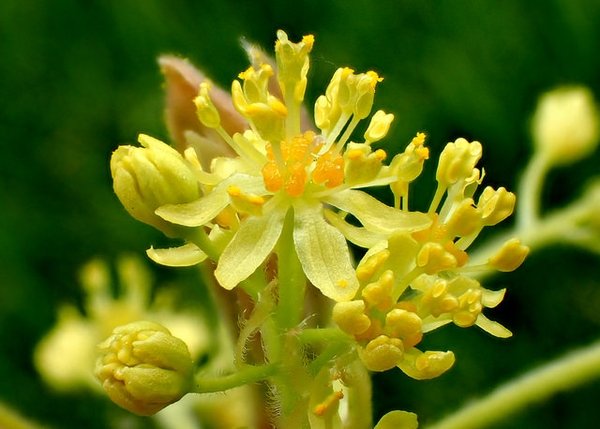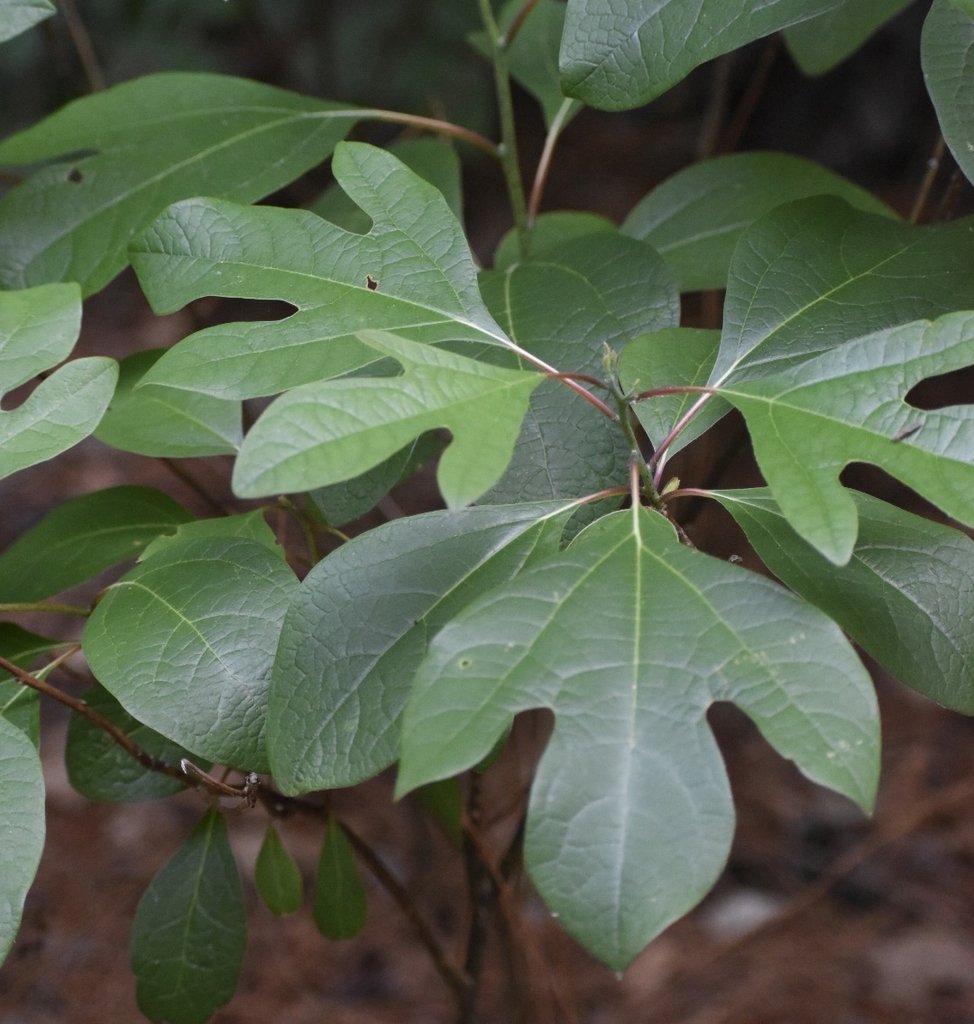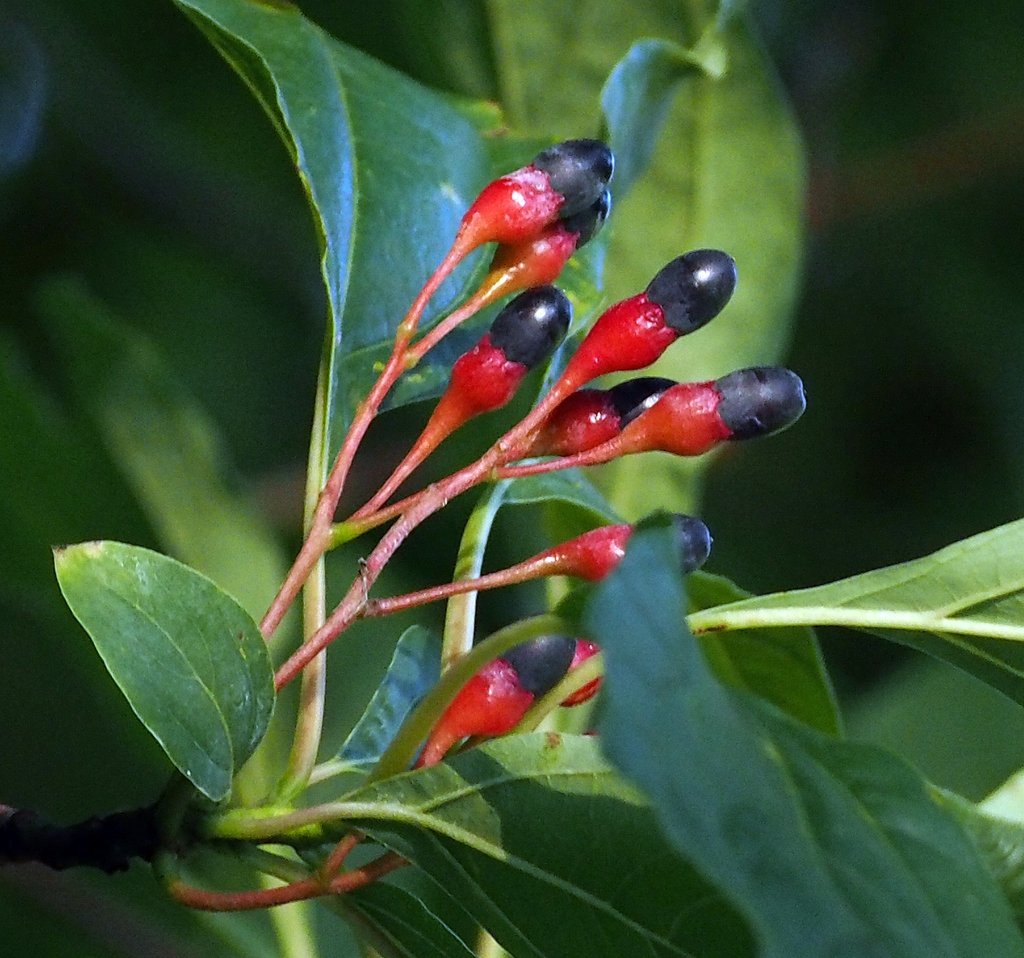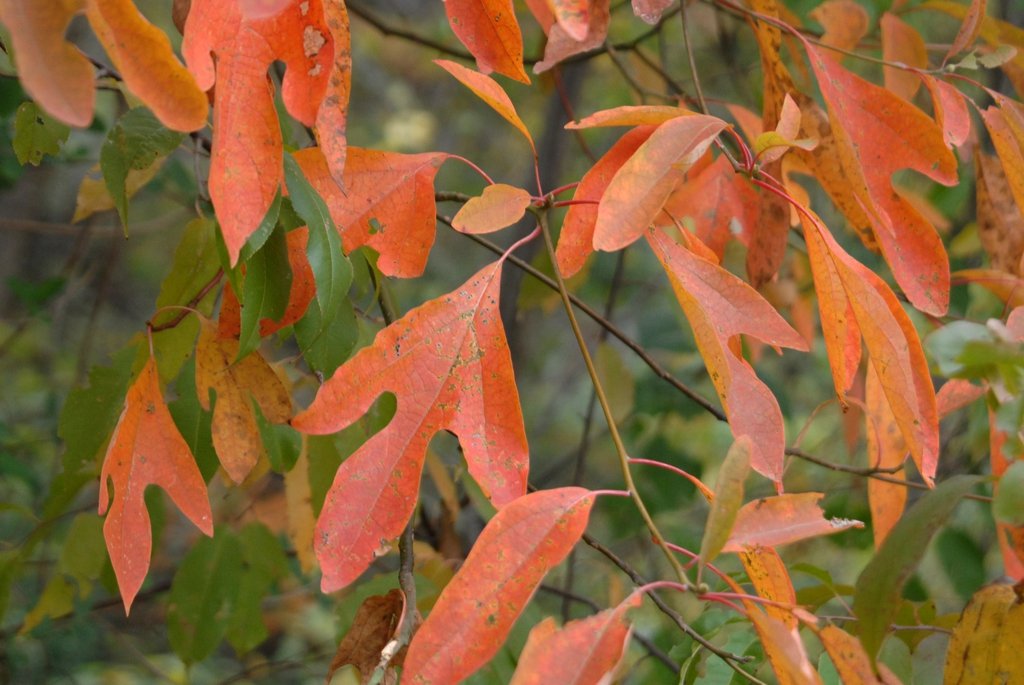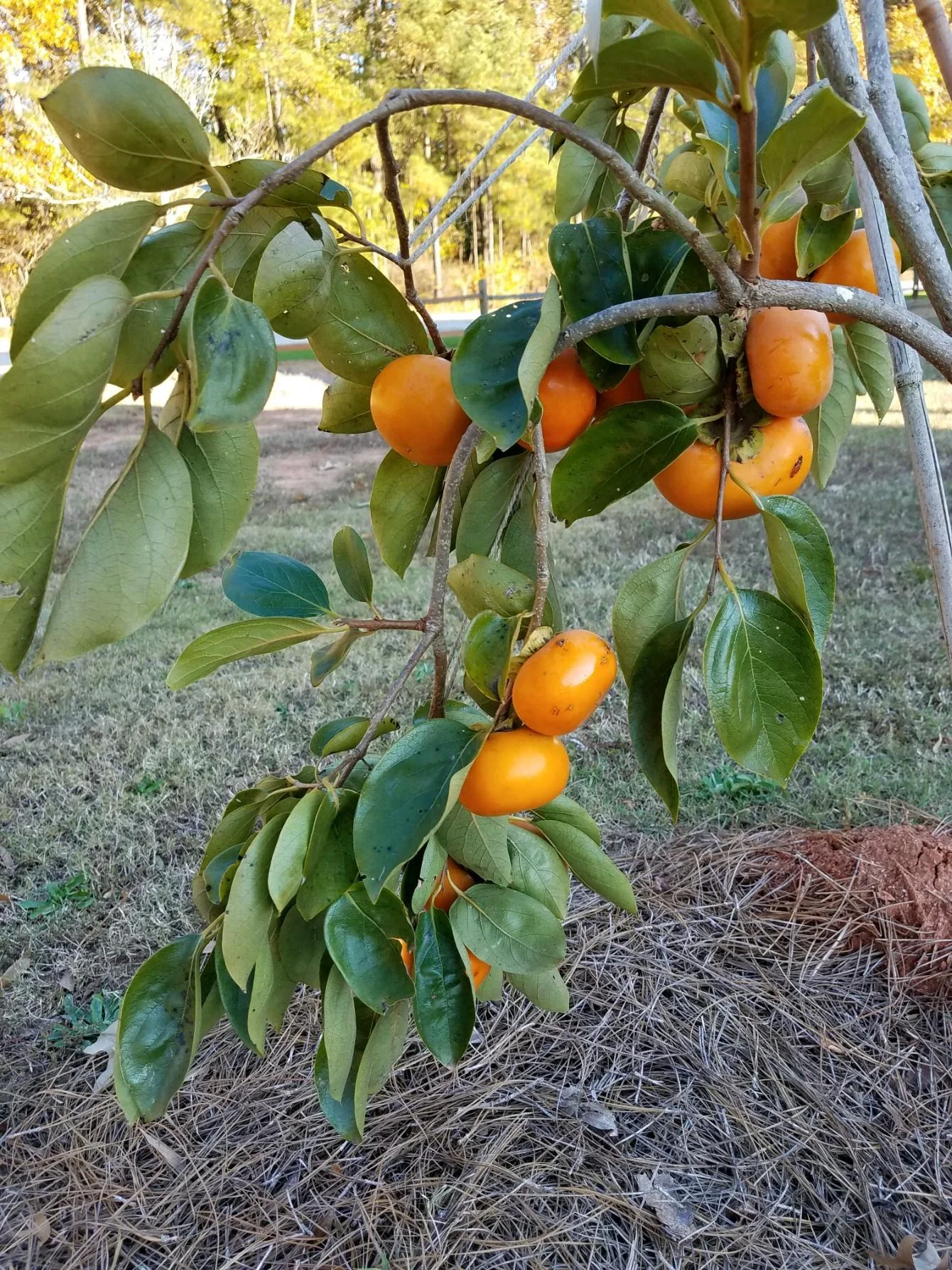Spring’s arrival in evident in the woodlands: the reddish tint of maple trees, the yellow-green of new leaves on others. From a distance, I spotted a haze of yellow that I assumed to be flowering Carolina Jessamine, the SC state flower. But no, it was the early flowers of Sassafras, pronounced SAS-ah-fras.
Sassafras is a deciduous native, found in more than half of the states, and is hardy in zones 4-9. It can be either a tree or a multi-stemmed shrub and will grow in neutral to acidic soil of almost any texture. It prefers full sun to partial sun. Flowers on female trees produce blue-black seeds held by red stems that are a favorite food of wildlife. Several species of swallowtail butterfly larvae feed on the leaves. Unfortunately, Japanese beetles eat them also. Fall leaf color is outstanding.
Established trees are heat and drought tolerant. Mature trees can reach to 60 feet tall and 40 feet wide. Trees can be pruned hard every other year to force multiple stem growth to create a hedge. Left alone, plants tend to sucker and may grow into a thicket naturally.
One of the most unusual facts about sassafras is that trees have three distinct leaf shapes, often occurring at the same time on a single plant. Leaves can be oval, mitten shaped (think of a palm with fingers held together and the thumb extended), or three-lobed (most common). Crushed leaves or injured bark exude a spicy scent. Native Americans used parts of the plants in medical treatments. Later, the roots were used to flavor root beer. That practice was discontinued when a cancer-causing compound was detected in the roots. You can still purchase filé, a thickening condiment made from powdered leaves, used in Cajun dishes like gumbo. The carcinogenic chemical concentration in filé is minimal.
Sassafras plants have a deep taproot that make them difficult to transplant unless they are small. The growth rate is medium to rapid. Avoid boggy sites to lessen the chance of root rot. Sassafras is in the laurel family and suffers from some of the same issues – leaf spot, wilt – that plague other laurels. These issues are unlikely to damage the plant. Plants may be attacked by the Redbay Ambrosia Beetle, an insect known to spread laurel wilt. Ambrosia beetle is easy to detect. It makes the trunk look like toothpicks are stuck into the bark. If you see this issue on Sassafras or any other tree, contact your local Extension office for advice on treatment or removal.

